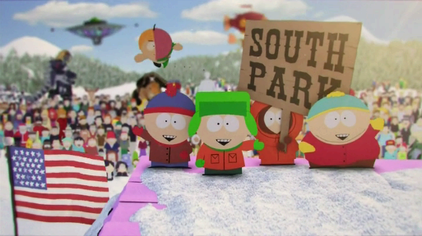Trey Parker and Matt Stone’s “South Park” comes back for a 22nd season this year after an ingenious ad campaign called #cancelsouthpark was made to mock organizations that have boycotted watching the show because of its insensitive humor. Rumors that the campaign was actually foreshadowing the real cancelation of “South Park” have not been confirmed, and it is likely that Comedy Central will renew the show for a new season next year.
The 22nd season of “South Park” premiered on Sept. 26 with an episode dubiously titled “Dead Kids,” meant as a commentary on the phenomenon of school shootings in the United States. The episode portrays the endless cycle of school shootings, and the desensitization that ensues when the public is constantly bombarded by grief and terror on the news. The only character that seems to care about what’s going on is Stan’s mother, Sharon, who is viewed by the rest of the town as overly emotional.
While some might jump to call this episode tasteless or disrespectful, no one can argue that “South Park” is — even after 22 seasons — still tackling the topics that most other satirical shows keep on their blacklists. While school shootings are an extremely hot topic in the U.S., popular satirical shows like “Saturday Night Live,” or even web-based productions like CollegeHumor, still won’t touch the topic. They’ll talk about rape, corruption and class issues, claiming that they’re covering controversial subjects and breaking barriers, regardless of the backlash, but they’re not: they’re picking and choosing. In effect, these shows are defining what issues can be humorously interrogated and what issues cannot be; this limits the freedom of the media and the self awareness of the people watching. In contrast, “South Park” doesn’t just break down barriers — it ignores them completely.
Of course, it doesn’t hurt that there are no live-action actors. No one has to do vulgar things on set or dress in ridiculous costumes. Instead, “South Park” creators Parker and Stone chose to have the entire series animated and produced weekly. This ingenious production method gives the show a leg-up in the world of satire. By animating the show, not only does South Park save itself from having real people act out extremely insensitive scenes, it also creates a distance between the show and its real-life viewers.
The show’s animation allows its audience to watch the show like a typical cartoon that just so happens to discuss topical issues, instead of a show that specifically targets its audience to make them feel bad and perhaps even stop watching. This is not to say “South Park” doesn’t target people. It certainly does. But, its plot lines and claims are so outrageous that people can see them as almost fantastical.
In essence, “South Park” is a modern allegory. Similar to allegories during Antiquity, “South Park” uses over-the-top storytelling, vicious insults and archetypal characters that serve to both distance its audience from the performance, and draw them into its message. It’s a satirical formula that’s survived the test of time. You’ll see, just watch the 22nd season.
Email Claire Fishman at [email protected].


























































































































































